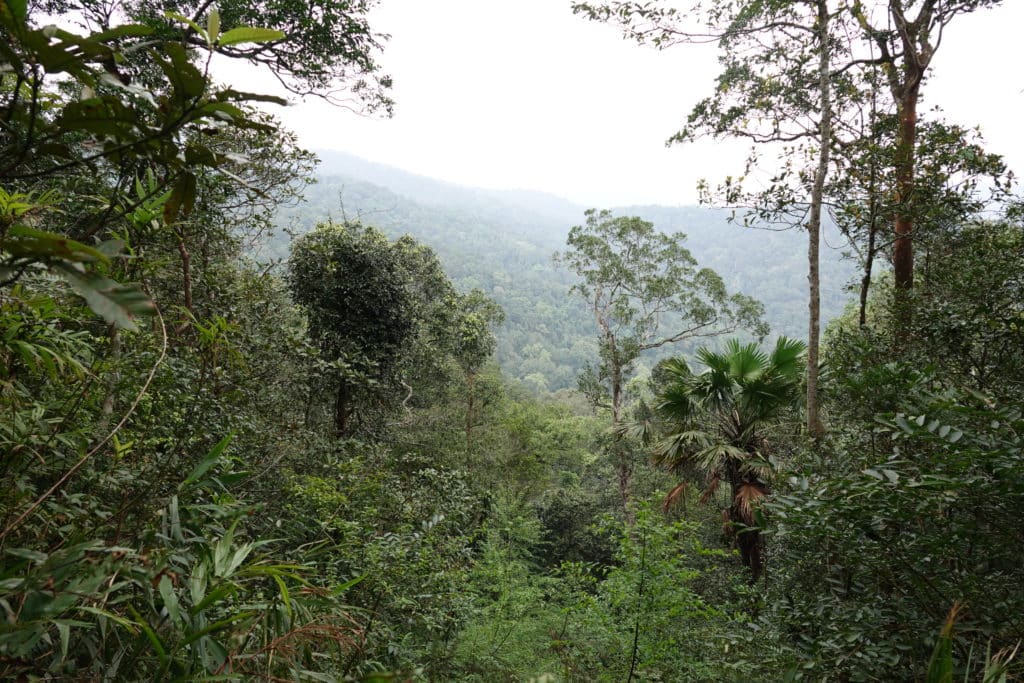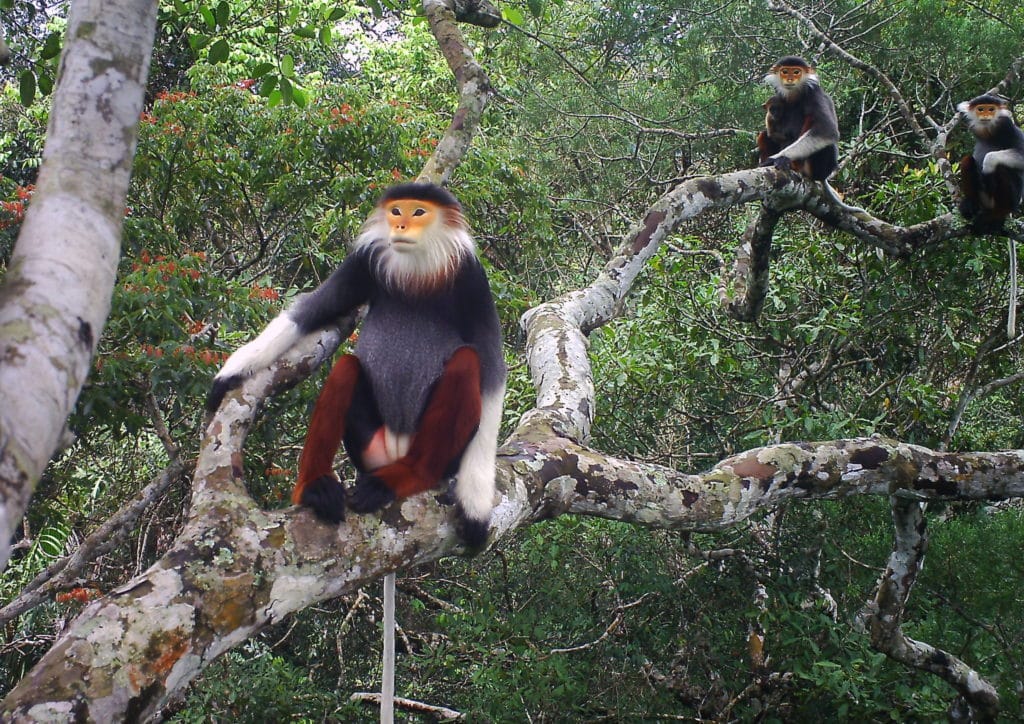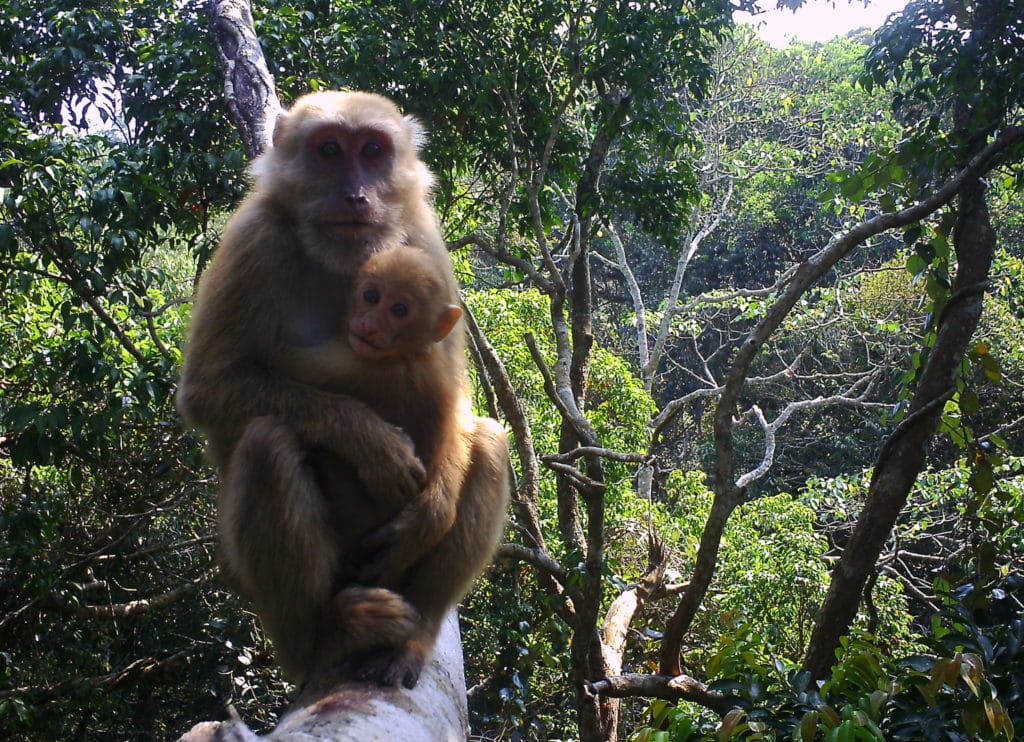“How incredible would it be to experience the forest from the point of view of arboreal species!” I thought. And so began this venture.
I define myself as a creative optimist: striving to create and spread optimism around me. To do so, I design and develop new ideas and projects, with my life’s purpose always in mind. As director of a science-based biodiversity conservation organization, every project I start and implement requires a strong rationale and justification. After all, I am on a mission: to protect — as much as I possibly can and with partners — the biodiversity of the wonderful Annamite Mountains of Laos.

A view of Nakai-Nam Theun National Park in the Annamite Mountains of Laos
That means embracing a holistic multidisciplinary approach: from biodiversity research and monitoring, to law enforcement, to community alternative livelihoods, to awareness raising and capacity building. For the past few years, Association Anoulak has focused on endemic, little-studied, and threatened species in Nakai – Nam Theun National Park, revealing it as one of the most important sites in the Annamite Mountains for biodiversity conservation. It notably holds one of the largest remaining populations of red-shanked douc, white-cheeked gibbon, large-antlered muntjac, Annamite drak muntjac, and Owston’s civet (all endemics to the Annamites).
Our work has informed conservation plans and Red List Assessments for several regional species and been published in scientific journals. We have been deploying anti-poaching patrols, providing protection against illegal hunting and employment to 36 local trained villagers. We initiated a community alternative livelihoods program, supporting villagers in the development of their first handicraft marketing and value chain strategy, to bring alternative income, preserve their traditional knowledge and craftsmanship, and reduce reliance on natural resources. We published illustrated books in collaboration with authors and artists to raise awareness in the national and international community of the conservation importance of the Annamites.

A red-shanked douc (Pygathrix nemaeus) traveling through the treetops.
However, when I first decided I would set-up arboreal camera-traps at our research site, it was the innovative, exciting and experimental aspects of the idea that initially drove me to it, rather than the scientific aspect.
“Imagine the impact that photos of rare, endemic, and highly threatened species like we have never seen before could have!” I thought. Not to mention, of course, the opportunity to learn with professionals the art and beauty of climbing trees…

The team receives professional tree-climbing training to prepare for the camera-trap project.
After piecing-up together all aspects that any new project requires (technical training, funding, timing, logistics, etc.) we set-up the first arboreal camera-traps of Laos, and in a region where we were hoping with excitement that we could capture some pretty unique wildlife photos.
From the first results, I was amazed! Not only by the breathtaking photos we got, with just a few cameras, but by the power these could have for awareness raising, judging from the ‘Likes’ and the ‘Shares’ and the ‘Wows!’ comments on social media where I started to share the photos. (I was slightly upset that these photos had far more reach than my projects progress news that I take the time to compose on a regular basis!)

A pig-tailed macaque (Macaca leonina) examines an arboreal camera trap.
Most people had no idea that such beautiful animals existed on Earth! (I am also still astonished myself sometimes!)
These photos are the links to reconnect our mind and lifestyle to nature. Links between the emotional reactions the photos procure in us, combined with the (new) information that these animals could disappear forever in a very short period of time due to the impact that we humans have on the natural world.

A group of red-shanked douc perch in the treetops.
Some of these images already reached a large audience through social media, but also appeared on the first page of the national press Vientiane Times and in the official inflight magazine of Lao Airline Champa Meuanlao. This not only contributed to making our work known more widely, but also to raising the profile of the Annamite Mountains of Laos, with its stunning landscape and rare wildlife, at the national and international level.
A picture is worth a thousand words… so enough is said and judge by yourself. Time to admire, love, act.

An Assamese macaque (Macaca assamensis) hugs her baby.


